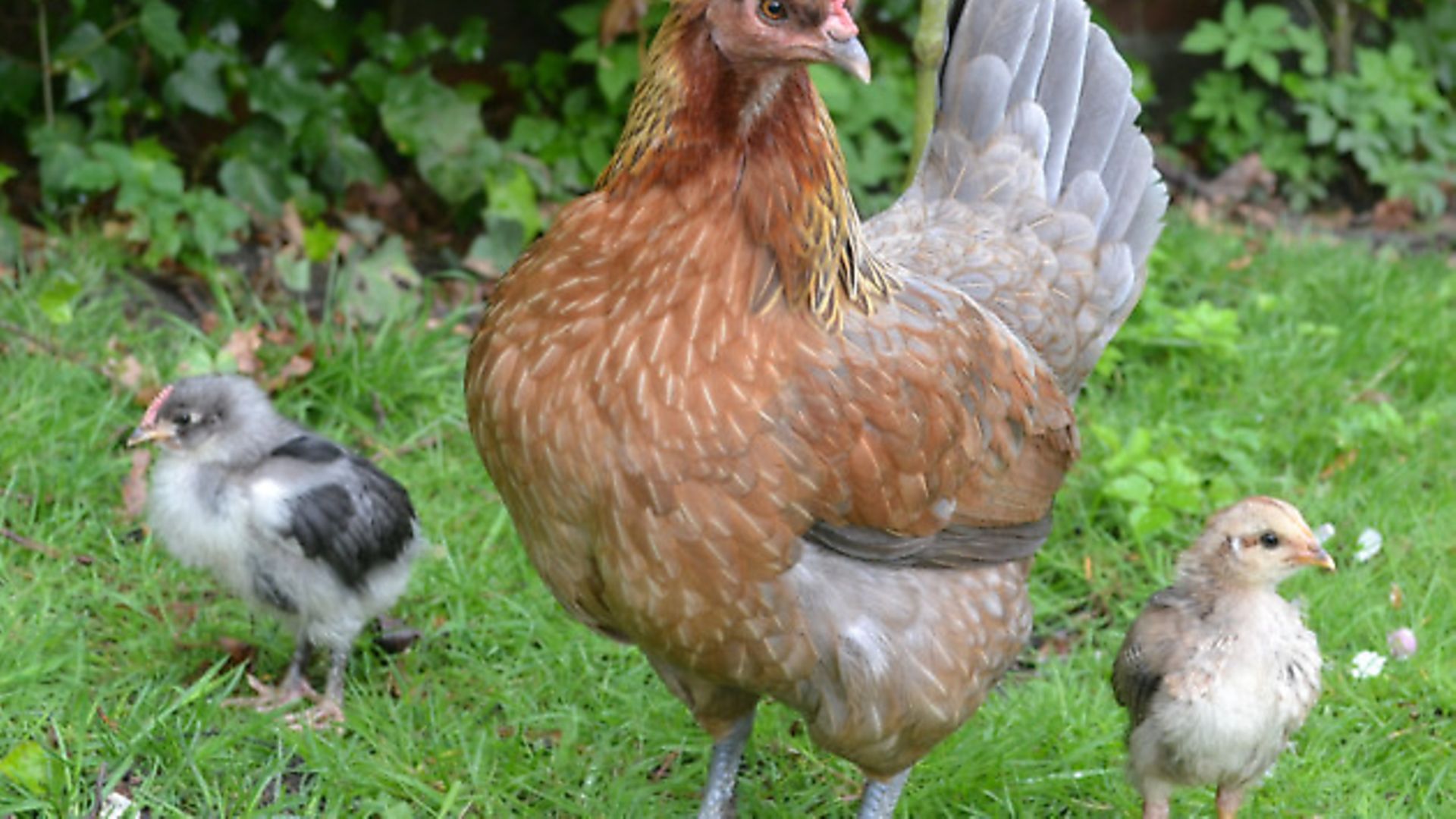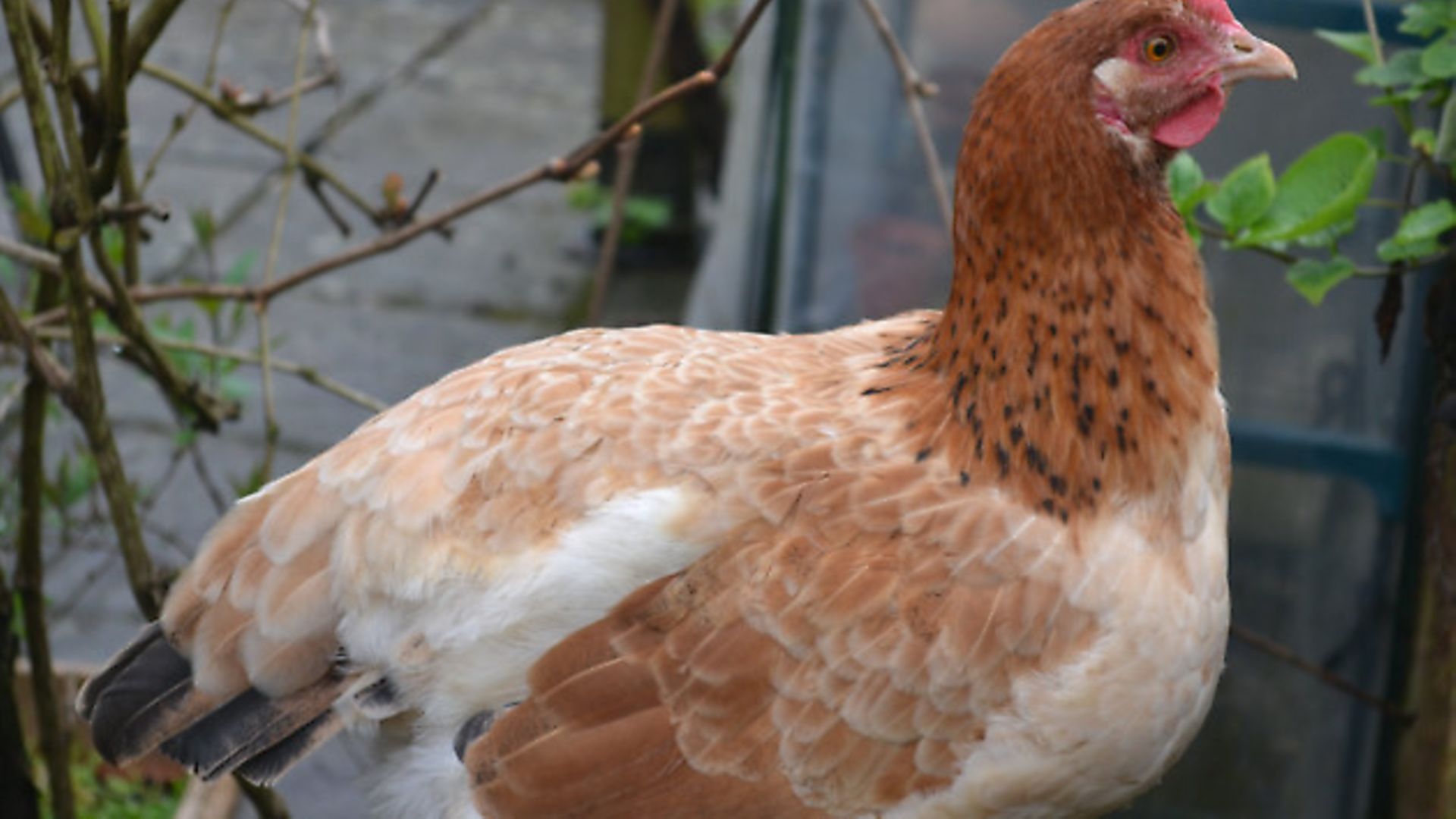Charlotte’s Chickens – latest news from Charlotte’s large flock

I bought six Copper Blue Marans eggs and put them under Ophelia along with a couple of my own Welsummer eggs. Only three of the Marans eggs hatched. The interesting thing about Copper Blues is that they don’t breed true. So if a Copper Blue Marans cockerel mates with a Blue hen the progeny is typically 50% blue, 25% black and 25% splash. This is what makes it rather fun. So I’ve got a black chick (Copper Black), a grey chick (Copper Blue) and a yellow chick (Splash). I am actually, for once, hoping that at least one of these chicks will be a cockerel. If I get a Splash cockerel, he can mate with my Copper Black hen that I already have and I will get all Blues from the eggs. If I get a Copper Black cockerel he can mate with my Splash Marans hen and I will also get all blues!

? Breaking a Broody
Lots of hens are falling broody now and I don’t want them all hatching chicks so there are a few whom I have to stop being broody. These are either hens that I want to get back to laying or ones that I am not convinced would make good mums. Breaking a broody hen can be difficult, especially with those who are very persistent. Removing a broody from her nest is a good idea and if possible putting her in an airy coop made with chicken wire although I realise that not everyone will have this sort of coop to hand. The aim is to cool her down, allowing air to circulate around her; shutting a broody in a hutch and run on her own can help break her broody instinct. Make sure she has food and water. Welsummers are classed as a light breed so they are not meant to go broody. One of my sliver duckwing Welsummers does tend to go through a broody patch each year. My husband has made me an airy coop (see pic) and I have tried it out on my Welsummer; she’s not happy inside jail but it will cure her broodiness.
? Sitting
My Silkie crosses, Sadie and Sammy, make wonderful broodies so they have been sitting on six Exchequer Leghorn eggs each that came from a friend and I’m hoping for good fertility.
? Candling
I candled one or two of the Exchequer Leghorn eggs at 10 days and they looked promising. You can make your own candler, using an old cereal packet. Cut a 3cm circle in the bottom of the packet, stick a torch with a strong beam inside the packet. Go into a darkened room with the egg or eggs you want to check. Hold each egg over the hole and the torch will produce concentrated light on the egg. If you can see a dark shape inside the egg then this will be the developing chick. An infertile egg will look clear inside. White eggs are the easiest to candle. Dark brown eggs are much harder to see into.
? More chicks arrive
Ten chicks have hatched. I have eight Exchequer Leghorns and two of my own Welsummer chicks. Sadie and Sammy are looking after the brood together, as they did last year. It is easier for me if they share a hutch and run and the chicks get well looked after with two mums!
? Still more chicks to come
I have also put some small silver spangled Appenzeller eggs, donated by my friends, Nicky and Patrick, under a little Orpington bantam who has gone broody. She is a first time mum but I am trusting that she will do a good job. So far so good, it seems as she looks very content.
? WILD BIRDS
At this time of year many wild birds, big and small, will be in your garden, taking your hens’ feed if they can. But there are other dangers: I have a friend who has a constant problem with magpies that steal freshly laid eggs. Buzzards and sparrow hawks can swoop down and carry off chicks and small bantams. I had a sparrow hawk who took a speckled Sussex and a Welsummer bantam, just leaving a few feathers behind. In the past I have also had free-ranging chicks disappear, presumably to flying predators.
? GRASS AND OTHER NATURAL FOOD
Grass is at its best at this time of year – it is growing fast and richer in nutrients than at any other time of year; the carotinoids and omega 3 fatty acids found in grass are what makes lovely deep yellow yolks. Your hens won’t only be eating the growing tips of grass though; this is also the best time of year for finding seeds and insects amongst the grass. Hens are omnivores so will be eating green stuff including weeds such as chickweed as well as meaty worms, insects such as woodlice, and even small animals such as mice, frogs or toads.
? WHEATEN MARANS HENS
My two hens are now 28 weeks and are coming into lay. They have reddened up nicely and look much more attractive now that they are almost fully grown! The first egg has arrived – it is small but beautifully speckled (see pic).
Image(s) provided by:
Archant







